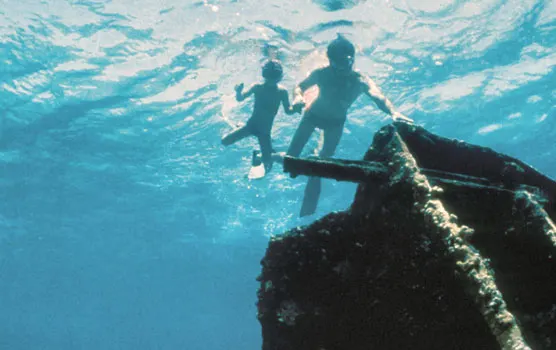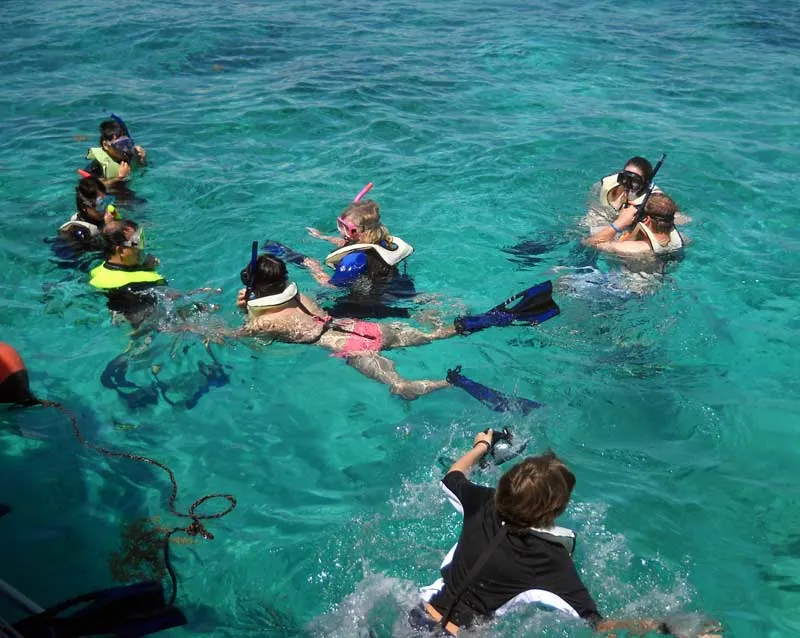People know about John Pennekamp State Park in Key Largo, and some may think it’s the only place to go snorkeling on a coral reef in Florida.
But you also can snorkel Biscayne National Park, which is just 20 miles south of Miami in Homestead. Here there are daily snorkeling trips and some have an additional feature — you snorkel a shipwreck.
Biscayne National Park, which is 95 percent underwater, is actually the northernmost section of the Florida Keys. It is composed of 33 small islands formed by fossilized coral reefs and encompasses a 28-mile-long reef.
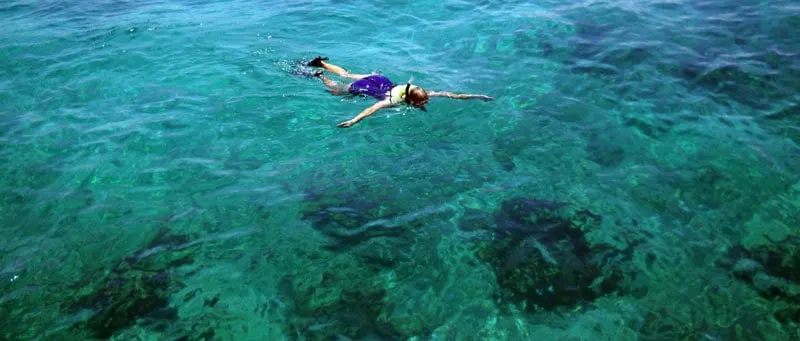
Biscayne National Park is home to a variety of tours in and on the water, from trips to islands to stand-up-paddleboard outings to snorkeling within the park.
This twice-a-day snorkeling trip is 3.5 hours long and costs $109. (Renting snorkeling gear is $10 extra.) These are small group trips with no more than 12 participants.
Biscayne National Park Institute, a nonprofit organization, operates the tours.
While there’s no guarantee on each trip if you’ll visit a wreck — it depends on weather and sea conditions — one of the most frequent destination is the Mandalay, which is where I snorkeled when I went on the shipwreck snorkeling tour. It has a great story.
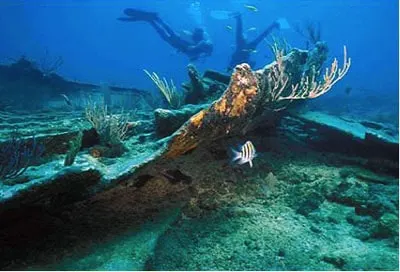
Snorkel Biscayne National Park: The story of the Mandalay shipwreck
The Mandalay is a 1928 schooner that sank Jan.1, 1966 on Long Reef. What’s left of the Mandalay is spread out in about 12 feet of aquarium-clear water, home to schools of colorful fish, gaudy purple sea fans and all sorts of reef flora and fauna.
It took about an hour by boat to reach the dive site. As you leave Biscayne National Park headquarters at Convoy Point, you see Turkey Point nuclear plant looming nearby to the south and Mount Trashmore towering to the north. (This dump holds what were once big parts of Homestead and Florida City, whacked by Hurricane Andrew in 1992.) In the distance you see the skyline of Miami.
The shoreline is all mangroves — part of the longest uninterrupted mangrove shoreline on the east coast of the U.S.
The trip to the reef takes you across “the park” — Biscayne Bay. You can look into the clear shallow water to see waving sea grasses and sponges and perhaps spot the occasional dolphin or ray. The boat passes the uninhabited islands of Biscayne National Park — Boca Chita, Elliot and Adams keys. These are the northern-most keys in the Florida Keys chain of islands, saved from development in the 1970s. (Maps still show these islands as Islandia, a development that was incorporated but never built.)
Beyond the keys is the Atlantic Ocean and the line of reefs that has been wrecking ships for centuries. The Mandalay is one of 44 identified wrecks in Biscayne National Park, and one of six being designated as part of a Maritime Heritage Trail, which offers mooring posts and laminated maps of each wreck.
The Mandalay is an easy shipwreck for even beginners to snorkel. While snorkeling around the reef, we saw a variety of common reef fish — trumpetfish, blue tangs, surgeon fish, four types of parrot fish, smooth trunkfish, schools of sergeant majors.
The tale of the Mandalay is one of those colorful stories of the sea. The 110-foot long, steel hulled schooner was built in 1928 for $177,000. It went through various owners until Windjammer Cruises, Inc., purchased, refitted, and renamed the vessel Mandalay in 1965, for use as a luxury “barefoot” cruise ship. The Mandalay was tricked out with only the best — mahogany, brass, ivory fittings, a teak deck.
It was New Year’s Eve 1965 when the Mandalay was headed toward Miami with 23 vacationers and 12 crew, returning from a 10 day Bahaman cruise. The captain, a 26-year-old Norwegian, went to sleep about 1 a.m., leaving a novice seaman at the helm. In the early hours of New Year’s Day 1966, the Mandalay was driven hard aground on Long Reef. Later, the captain admitted he had miscalculated — the Mandalay was 20 miles off course.
Passengers were safely rescued by helicopter but the ship’s fate was far worse. With the Mandalay unprotected, scavengers stripped it, taking everything of value — including the passenger cameras, watches, and purses. Even the lead ballast blocks — tons of it — were taken by small outboard motorboats and melted into lead diving weights and resold at $1 per pound.
Later, tugboats failed to pull the Mandalay off Long Reef, and 50 years late, fish are picnicking on her while snorkelers enjoy the view.
Visit and snorkel Biscayne National Park
There’s no question: The best way to visit Biscayne National Park is by boat.
A kayak and canoe launch area and rental operation gives visitors a chance to explore the mangrove coastline. But, except for the most advanced and adventurous kayakers, the islands are too far to reach by paddle. (A ranger estimated six hours of paddling over open water.)
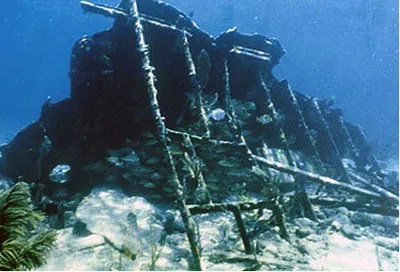
Both Boca Chita and Elliott Keys have campgrounds, but if you don’t have a boat, you have to arrange transportation to get you there and back. Tent camping is $15 a night; boat camping is $20 a night, which includes dock space and use of a camp site.
Convoy Point, Biscayne National Park headquarters, offers beautifully situated picnic tables — with shade and overlooking Biscayne Bay — and a scenic quarter-mile boardwalk. The visitor center offers exhibits and a movie.
Planning your visit to Biscayne National Park
Admission to the park is free. It’s easy to find, due east of the huge Homestead-Miami speedway.
- In addition to the basic snorkeling trip, you can opt for a full-day adventure, which includes snorkeling, paddling and visiting an island for $199. This trip is available from Homestead or Coconut Grove.
- Information about all guided tours and booking tickets.
- Florida Rambler guide to Biscayne National Park, including trip report on boat tours to Boca Chita Key.
- Also from Florida Rambler: Take history-oriented tour of Stiltsville in Biscayne National Park.
- Biscayne National Park official website
- Maritime Heritage Trail
- Find a room in Homestead
Things to do near Biscayne National Park
- If you’re driving to Biscayne National Park, you may want to keep going to explore the Florida Keys. Our Florida Keys mile-marker guide is an ideal companion to a roadtrip.
- Everglades National Park is minutes away. Here are our tips for visiting Everglades National Park.
- Robert is Here is a great stop in Homestead for milkshakes (key lime!) plus exotic fruit and variety of farm animals.
- Drive down scenic Card Sound Road and discover Alabama Jack’s, a classic Keys tiki bar known for its conch fritters.
- An attraction that belongs on the Florida funky hall of fame: Coral Castle Museum, is minutes away.

The author, Bonnie Gross, travels with her husband David Blasco, discovering off-the-beaten path places to hike, kayak, bike, swim and explore. Florida Rambler was founded in 2010 by Bonnie and fellow journalist Bob Rountree, two long-time Florida residents who have spent decades exploring the Florida outdoors. Their articles have been published in the Sun Sentinel, the Miami Herald, the Orlando Sentinel, The Guardian and Visit Florida.

